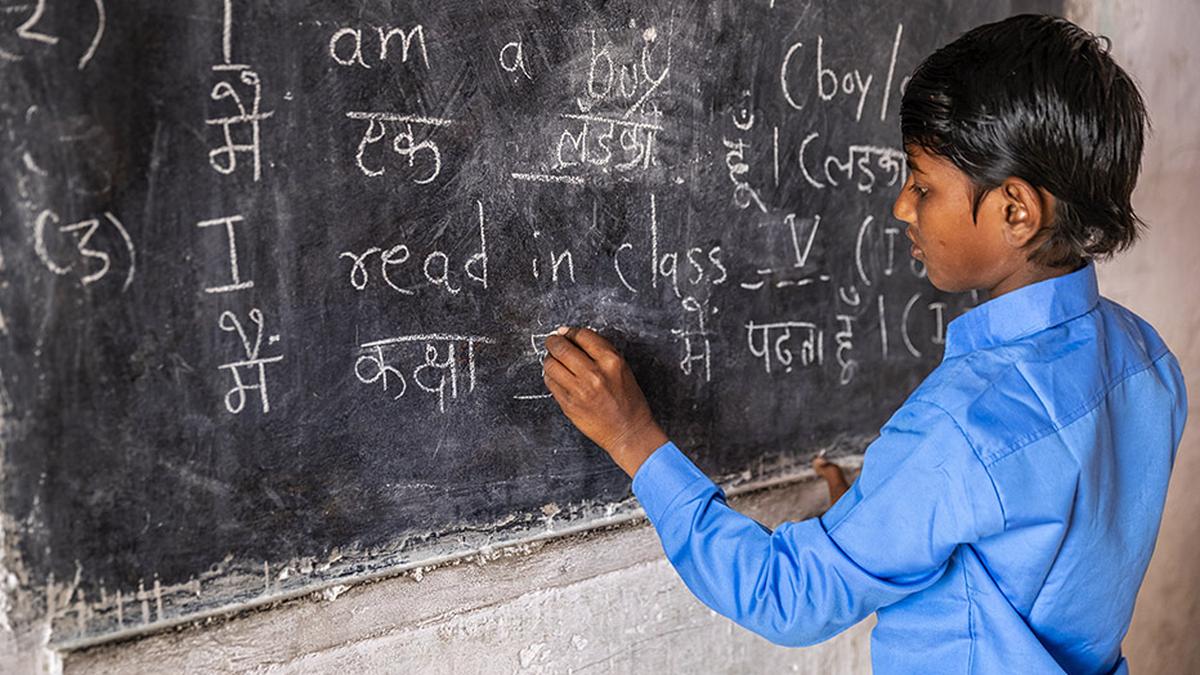With the debate over Tamil Nadu’s refusal to adopt the three-language policy still ongoing, the latest data needed to address key questions on the issue is lacking. Vital data that could help bring clarity is the list of languages currently being taught in schools across the States.
Notably, DMK MP Kanimozhi Karunanidhi raised this question in the Lok Sabha (LS) last month. However, the reply only provided the share of schools that taught three-languages, without mentioning the specific languages.
The last survey with this detail was the 2009 All India School Education Survey, which is not publicly available. The Hindu accessed a copy of the report through sources in the Education Ministry. Notably, even in the 2009 survey, school-wise data on languages taught is limited to the primary stage.
However, the insights remain relevant, as the LS reply from 1995 states that 27 States/U.T.s had implemented the three-language formula (Table 1).
Table 1 | The table shows the status of implementation of the three-language formula in States/UTs as per a reply in the Lok Sabha on December 13, 1995
An analysis of the 2009 survey (Table 2) shows that in Bihar, 99.1% of schools taught Hindi, 64% taught English, and 56% taught Sanskrit in the primary stage, with only 8% teaching other languages.
Table 2 | The table shows the share of schools that taught the regional language, English, Hindi, Sanskrit and other languages in the primary stage, across select States, as of 2009
Similarly, in Uttar Pradesh, 94% taught Hindi, 75.3% taught English, and 65.2% taught Sanskrit in the primary, with just 7% offering other languages. For Uttarakhand, the numbers were 99.5% Hindi, 85.5% English, 79.4% Sanskrit, and 2.6% others.
Data from these three States show that in Hindi-speaking States, the third language offered is mostly limited to Sanskrit. This is notable as the 1968 National Education Policy (NEP) had preferred a modern southern language in Hindi-speaking States.

Officials in Himachal Pradesh’s Department of Education told The Hindu that in the last 15 years, there was no enrolment for Telugu, Tamil, and French “due to unavailability of teachers”. Also, in the State, 34% of the 100 sanctioned Punjabi teaching posts are vacant, 71% of the 100 Urdu teaching posts are vacant, while only 9.8% of the 5,078 Sanskrit teaching posts are vacant presently. The high number of teaching posts and low vacancy at present also hint at Sanskrit being the preferred third language even now.

A similar situation continues in Uttar Pradesh currently. Bhagwati Singh, Secretary, Madhyamik Shiksha Parishad, Uttar Pradesh, said, “We have one student of Malayalam, three students of Tamil, and five students of Kannada registered with us. These students appear as private candidates.”
Data from the 2009 survey also show that in Gujarat, over 97% schools taught Gujarati and 20.9% taught English, and 64% taught Hindi in the primary stage, with only 2.2% teaching other languages. In Karnataka, 97.5% offered Kannada, 86.2% English, 30.4% Hindi, and just 15% others.

In Punjab, 79.2% schools offered Hindi, with less than 1% offering languages other than English and Punjabi. This hints at another trend, that in non-Hindi speaking States, the third language is mostly limited to Hindi.
Moreover, the LS reply shows that in Bihar, Jharkhand, West Bengal and Odisha — States that had agreed for the three-language formula — less than 50% schools had implemented it as of 2023-24 (Map 3).
Map 3 | State-wise share of schools teaching three languages as of 2023-24
In Himachal Pradesh, Madhya Pradesh, and Haryana, less than 60% schools had implemented, pointing to uneven execution among those States that agreed.
Detailed data for recent years is the need of the hour.
(With inputs from Amit Bhelari and Mayank Kumar)
Source: The data for the charts were sourced from All India School Education Survey (2009), Lok Sabha questions &answers and includes The Hindu’s calculations
Published – April 04, 2025 07:00 am IST
